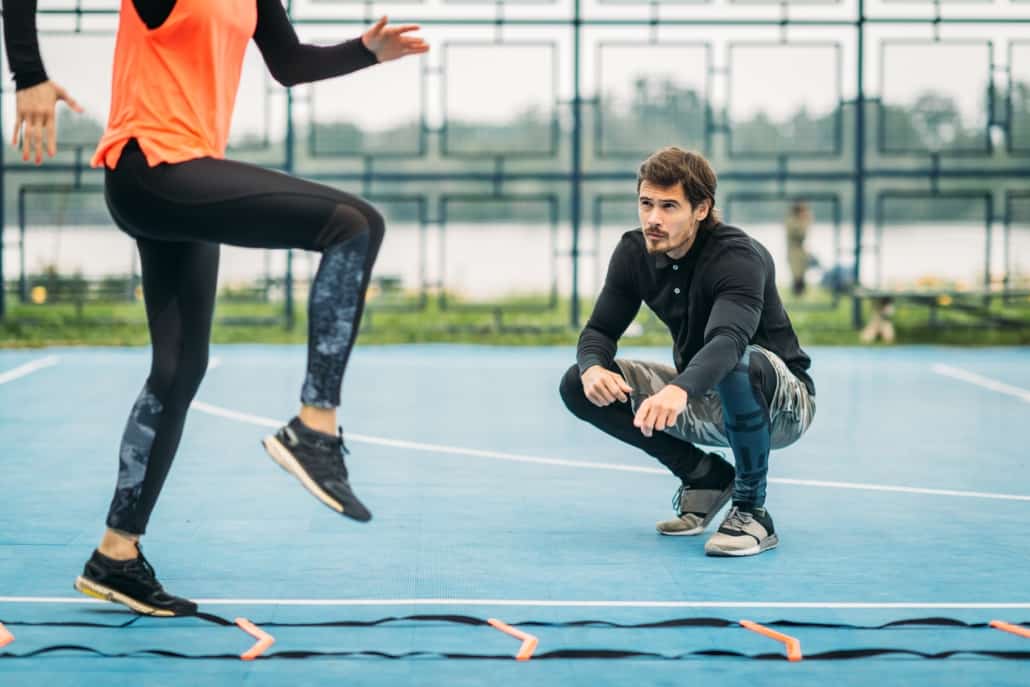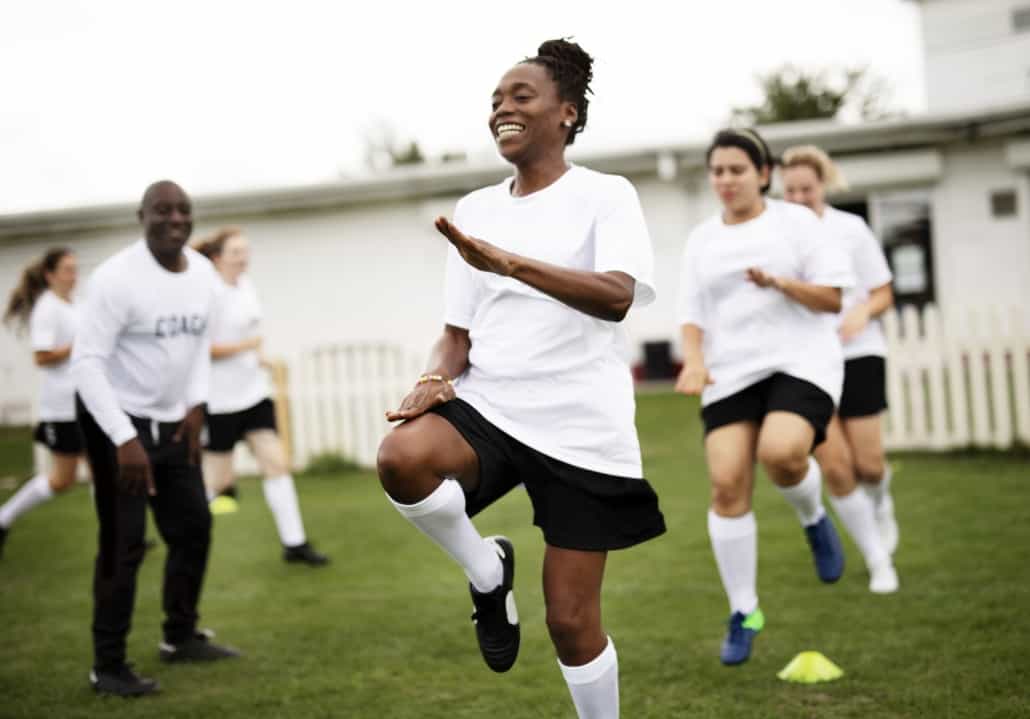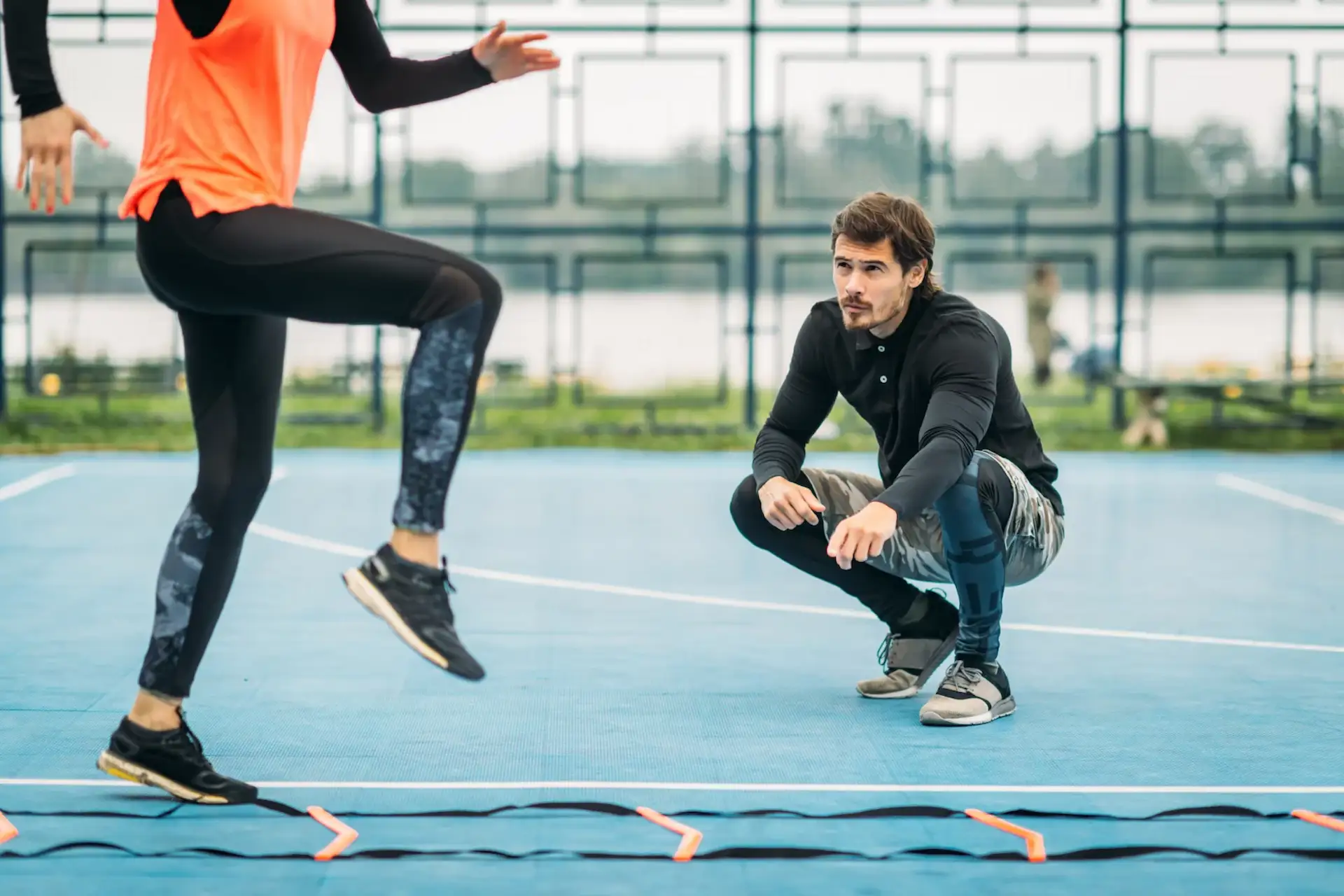What is strength and conditioning?
As professionalism in sport grows, so does the team behind the team. In this blog, we delve into the specifics around a key member of the support staff – the strength and conditioning (S&C) coach. If the organisation is a major one with a big enough budget, then it will have a sports science/medical department and the S&C coach sits within that group. They will play an important role in physical development. Today, we’ll consider what their roles are and how you might go about bagging yourself a job being one.
Firstly, it’s worth providing a little background about strength and conditioning. The discipline is overseen by its own specific bodies, with ASCA (Australia), NSCA (USA) and UKSCA (UK) being the three most established (though most countries have their own similar bodies). The specific definition of S&C is actually hard to come by but broadly it involves the implementation of specialised methods of programming and training whereby an individual enhances their health, fitness and/or performance.
What is a strength and conditioning coach?
Within sporting organisations, strength and conditioning is overseen by an S&C coach. Though this is not always the case for smaller, less well-resourced organisations – this task may fall to a fitness coach, sports scientist, athletic trainer, or even a technical sports coach if a bespoke S&C expert is not employed. If there is an S&C coach present though, what are they responsible for? The English Institute of Sport (EIS) states: “an S&C coach plans, delivers and reviews the physical and physiological preparation of athletes aligned to specific sports performance outcomes.”
Although S&C coaches may not always work with athletes looking to improve performance, for the purpose of this blog, that is where our focus will be. We will also focus on team sport S&Cs, though much of the article is relevant to individual sports too. So, now we have an idea of what the discipline is and how its coaches might fit into organisations, let’s consider what a day in the life of an S&C coach might look like.

What does a strength and conditioning coach do?
It’s worth reiterating here that jobs in sport can be quite fluid in how the roles and responsibilities fall. You may be the S&C coach on paper, but your role may be far broader than that, which might be something that you’re really pleased about, or you may see it as a distraction from your passion. Depending on where you are in your career, you may have to accept this as part of the process, but we’ll cover more of ‘the journey’ later. If your role focuses more clearly on S&C — meaning you’re not being pulled into other areas too much — what might you be doing with your days? Well, I think often when we hear the term ‘S&C’ we think gym – the ‘S’. But the ‘C’, as we’ll discover below, is often actually a considerable part of your role.
From my experiences, it’s likely your day will start early, around 7 am. If you’re lucky enough to be able to get breakfast at work, you’ll eat that and if you’re really lucky, before breakfast you may go and get your kit (or uniform, depending on where in the world you’re based) and get changed. An interesting aside here is that people seem obsessed with getting their initials on their kit. Originally, this was simply to help whoever did the laundry to know what item belonged to whom. Rightly or wrongly (wrongly, obviously) it’s now a bit of a status symbol.
Breakfast will be followed by a medical meeting at around 8 am. Here, injured players will be discussed and individual staff roles and responsibilities for the day will be outlined.
By 9 am, you’ll likely find yourself in the gym where you’ll meet players and take them through some kind of movement/prehab/individual/mechanics/injury prevention work before they go out for training. This is a nice opportunity to put a bit of a stamp on some areas that you may want to influence, which perhaps aren’t covered in the main pitch or gym sessions, such as running mechanics. It’s also a good chance to build relationships with players and technical coaches who may stick their heads in to see what’s going on.
It can’t be underestimated how important relationships are when you’re looking to build trust and buy-in into your methods. The structure of this period will be very different between organisations – some will be run like a military boot camp whereas others will be influenced by the individual players and what they want to do. Similarly, some clubs will make these sessions compulsory, while for others, it will be optional. Both scenarios can bring their own frustrations at times! This is why buy-in and trust are so important.
At 10 am, players will be filtering out of the gym to get ready to head to training. Depending on the discipline levels in the club, you may now have to tidy the gym (hopefully they’ve done this for you though! Again, all about relationships, trust and respect). When training starts at around 10:30 am, you will likely be doing one of two things – looking after fit players or looking after players in rehabilitation programs. If they’re fit, you may be out on the grass/court/pitch, falling into a more fitness coach role now and concentrating on the ‘C’ of S&C. You’re looking at the periodisation of the aerobic and anaerobic work they’re doing during training, hoping it meets your objectives while also ticking the technical and tactical boxes without them doing more than you’d like. This is quantified typically by the use of such technology as GPS and heart rate monitoring systems. This balance can be hard to achieve and yet again this is where your relationship with the coaches is so important in meeting everyone’s aims.
Depending on when the players have last competed, they may be undertaking a recovery session. This can feel a little like babysitting at times while you stand next to 10 spin bikes while players are chatting about all sorts, some of them going through the motions a little. But this type of session is another chance to use your skills to conduct evidence-based practice using different pieces of equipment to aid their recovery between games, which is incredibly important. It is also another great chance to build those relationships, as it’s usually a lower-tempo session, so it’s easy to have conversations.
If you aren’t with fit players, then you will be looking after a player currently undertaking rehab. This isn’t any kind of demotion and is in fact an emerging S&C role in its own right. Historically, physios looked after players until they weren’t injured any more, and they were phased into full training over time. Increasingly now though, physios with more interest in S&C, or S&C coaches with more interest in injury rehabilitation, are changing the dynamic of this continuum to provide a more bespoke program to ensure the injury and return to play process is optimised. Depending on where they are in their injury timeline, they may be doing pool or bike sessions to reduce the load on the lower body, or they may be outside doing reduced-load technical sessions with a specific aerobic or anaerobic component. This too will be influenced by their pre-injury GPS and heart rate data, so they can be brought back to full training as quickly but safely and effectively as possible.
Midday brings us to lunch. As an S&C coach, you may also have some role in guiding nutritional practices in the dining room, but this may be covered by a nutritionist, and you’re fortunate enough just to have 20 or 30 minutes to have a break and some food. A difficulty here though can be that you seldom have one group of individuals training entirely at once, who all then come for lunch together and leave together. It’s more likely that you may have a few who are injured and are doing less, so may come in early; the main group, and a few who stick around to do a few extra bits … and that might be a simple split! So, if you are out until the last group is finished but then are expected to be somewhere once the first group to lunch have finished, this chews your break time down considerably! Admittedly, this is made worse in organisations with fewer staff, but it can be an issue at times.
Not long after 1 pm you could well be back in the gym. This is the most ‘S’ session that will happen – the gym/strength/resistance training/power/functional movement session (depending on the terminology at your organisation). Specifically here, I’m basing this around football/soccer – rugby gym sessions often take place first thing in the morning. I’m not going to go into the how often or how much strength training should be done (blog available here) but I’ll just say that this session will include some resistance training, and despite what people think when you say you’re an S&C coach, it won’t take up a large percentage of your week.
By 2 pm, most of the players will have finished this session and may be heading to meetings with coaches or may be leaving. You may have another rehab session to do, or you may be heading back to the office. If you work for a first team (the best team of adults in the club, rather than the youngsters or the reserve side) you are likely now onto report compiling and sharing with other relevant staff. This data might be based on the pitch session from earlier in the day or it may be from the gym session that’s just happened. If you’ve been working with an injured player, you may be sharing notes with a physio or doctor. If you work in an academy, you may have just said goodbye to the U18-U23s and now have some of the U14-U16s coming in, and you’re back to repeat some of the morning’s activities with a younger group. This may happen again at 6 pm when the U7-U13s arrive after school (hopefully you’ve got enough staff so there aren’t too many 7-8 pm days, but they do happen).
Beyond this, you may have some meetings to discuss what is coming up in the schedule, or some in-house or external continued professional development (CPD) with an expert coming in to discuss a topical issue. You may also need to catch whoever you work closely with, such as a coach, to discuss tomorrow’s session as you may need to plan for that.
Depending on your specific role, you’re hopefully heading out the door by 6 pm. This might sound like a lot, and it can be. But organisations really do take good care of staff, and staffing numbers are increasing year on year, which reduces the pressure. It’s also a real privilege to be able to have these roles. For me, it certainly beats a desk job (although it’s not great when it’s raining!).

What would a typical strength and conditioning coach salary be?
Sporting organisations have been criticised in the past for not publishing salaries when advertising jobs, as well as for the amount being too low when they do. That is also changing, I’m pleased to say. Experience in gaining one of these jobs is everything though, of course. A true entry-level S&C coach job at a semi-professional club may well be voluntary or minimum wage. This obviously may not be what you hope for, but the more desirable roles require experience and that has to be obtained somewhere.
Once you have some experience, roles in the UK typically start at around £15,000/ $20,000 USD/ $28,000 AUD – this is hugely varied. Graduate-level roles with appropriate experience may be closer to £25,000/ $ 34,000 USD/ $ 47,000 AUD. A head of department in a second-tier soccer club in the UK may be earning £45,000/ $61,000 USD/ $84,000 AUD while a head of performance in a top club may be on £250,000/ $339,000 USD/ $466,000 AUD (there are probably less than five of them in the English Premier League though!).
How do you become a strength and conditioning coach?
So, you like the sound of the gig, and you want to follow your passion, but how do you go about it? I’ve already mentioned one keyword in how to get into this world. Experience. There are thousands like you. They may have undergraduate degrees in sport and exercise sciences, human movement sciences or even more specifically now, in S&C itself. They may also have postgraduate degrees in S&C, exercise physiology or biomechanics, but what will separate them all is experience. My advice if you have none is to start at the bottom. Go to a local semi-professional team and offer to lend a hand. This serves two purposes. Firstly, it gets you onto the ladder, which is so important. Perhaps more importantly though, it allows you a position where you can be creative, you can learn, and you can make mistakes. If you’ve got a mate’s brother’s dog’s vet who works at Manchester United, they might be able to get you in for a few afternoons, but you won’t be taking Ronaldo through a novel eccentrics routine on day one. You’ll be watching, likely from a distance. Now, this has value too, but it’s likely they’re just happy to have someone to lighten the load and you can’t learn by doing.
Learning by doing should be underpinned by some understanding though! The NSCA’s CSCS qualification and UKSCA ASCC qualifications are great places to start and will bolster your CV. As will a relevant undergraduate or postgraduate degree. Do you need to go to university? No. But more and more frequently this is also your first rung of the ladder, as universities are linked into clubs that offer placements -these can be invaluable. If you’re unable to make a commitment like attending university, then that’s fine but things may take a little while longer.
Once you’ve got some experience and you’re at least working towards some relevant qualifications, where do you find these jobs? Unsurprisingly, job pages of the NSCA and UKSCA are a good place to look. These websites can also be good places to attend webinars and short workshops to help you gain knowledge. Other vacancies can be found at Global Sports Jobs, Careers In Sport and others. It’s also worth keeping an eye on individual clubs’ and governing bodies’ websites. Thankfully, Twitter has made this much easier. Following the above pages’ accounts as well as prominent S&C coaches and academics will enable you to see a lot of what’s coming up.
Working as an S&C coach is a great job. I had the pleasure of doing it over a seven-year period across the top three leagues in English football in both first-team and academy settings. It gave me some incredible experiences that I’ll never forget. It can be tough though, as I’ve said – you will likely need to work on early mornings and weekends and will miss out on family and social events. On the plus side, there are more jobs than ever, with the professionalism of more sports and the expansion of women’s and disability sports too. But there are many more people fighting for those places. So, if you want to get there, you must be prepared to outwork, out-sacrifice, and often simply outlast the competition.



